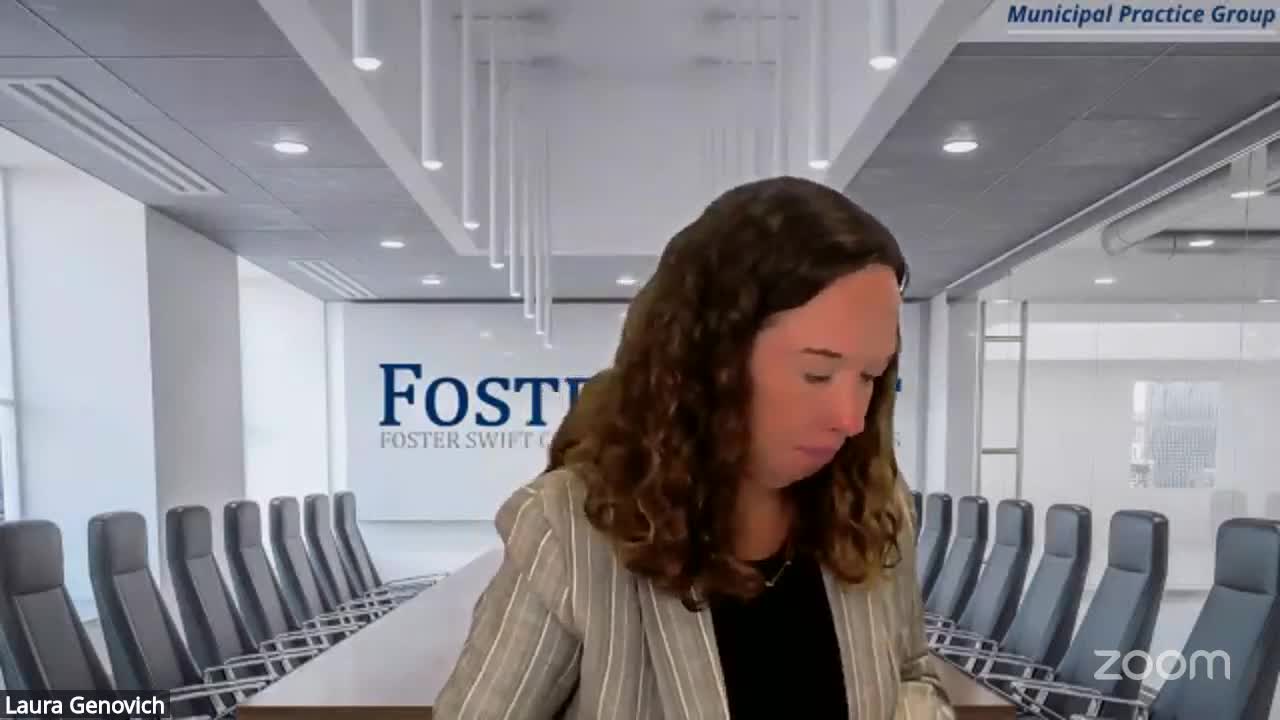Petoskey City Council Reviews Proposed Dangerous Building and Sign Ordinance Amendments
August 04, 2025 | Petoskey City, Emmet County, Michigan
This article was created by AI summarizing key points discussed. AI makes mistakes, so for full details and context, please refer to the video of the full meeting. Please report any errors so we can fix them. Report an error »

The Petoskey City Council made significant strides in addressing community concerns during their meeting on August 4, 2025, with a focus on two key ordinances: the mural sign ordinance and a proposed dangerous building ordinance.
The council held a second reading of the proposed ordinance amending the sign regulations to separate murals from the existing sign ordinance. City Manager Horn emphasized the importance of ensuring that the language in the ordinance accurately reflects this change. Council members discussed minor amendments to clarify references to the new mural regulations, ultimately passing the ordinance unanimously with a vote of 5-0. This move is seen as a step towards enhancing the city’s aesthetic appeal while providing clearer guidelines for public art.
In a more pressing discussion, the council reviewed a proposed dangerous building ordinance aimed at improving code enforcement and addressing blighted properties. City Manager Horn explained that the ordinance is designed to provide the city with additional tools to ensure compliance from property owners who neglect their responsibilities. The council acknowledged the need for such measures, especially in neighborhoods affected by dilapidated buildings.
Council members raised questions about the legal terminology used in the ordinance, particularly regarding terms like "blight" and "vacant." The city attorney clarified that the language mirrors state law, which is intended to streamline enforcement processes. The council also discussed the financial implications of enforcing the ordinance, including the risks associated with liens on properties.
While the dangerous building ordinance is still under discussion, it is expected to be presented for a first reading at the next meeting. The council is considering additional measures to address blight and vacancy issues in the community, indicating a proactive approach to maintaining the integrity of Petoskey’s neighborhoods.
As these ordinances move forward, the council aims to balance enforcement with collaboration, ensuring that property owners are given opportunities to comply while also protecting the interests of the community.
The council held a second reading of the proposed ordinance amending the sign regulations to separate murals from the existing sign ordinance. City Manager Horn emphasized the importance of ensuring that the language in the ordinance accurately reflects this change. Council members discussed minor amendments to clarify references to the new mural regulations, ultimately passing the ordinance unanimously with a vote of 5-0. This move is seen as a step towards enhancing the city’s aesthetic appeal while providing clearer guidelines for public art.
In a more pressing discussion, the council reviewed a proposed dangerous building ordinance aimed at improving code enforcement and addressing blighted properties. City Manager Horn explained that the ordinance is designed to provide the city with additional tools to ensure compliance from property owners who neglect their responsibilities. The council acknowledged the need for such measures, especially in neighborhoods affected by dilapidated buildings.
Council members raised questions about the legal terminology used in the ordinance, particularly regarding terms like "blight" and "vacant." The city attorney clarified that the language mirrors state law, which is intended to streamline enforcement processes. The council also discussed the financial implications of enforcing the ordinance, including the risks associated with liens on properties.
While the dangerous building ordinance is still under discussion, it is expected to be presented for a first reading at the next meeting. The council is considering additional measures to address blight and vacancy issues in the community, indicating a proactive approach to maintaining the integrity of Petoskey’s neighborhoods.
As these ordinances move forward, the council aims to balance enforcement with collaboration, ensuring that property owners are given opportunities to comply while also protecting the interests of the community.
View full meeting
This article is based on a recent meeting—watch the full video and explore the complete transcript for deeper insights into the discussion.
View full meeting
